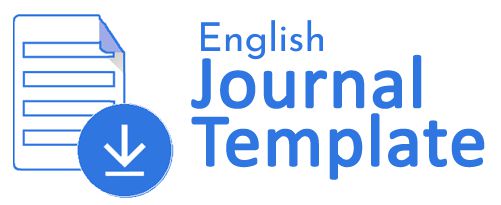Analysis And Prediction Of Global Population Using Random Forest Regression
DOI:
https://doi.org/10.34012/jurnalsisteminformasidanilmukomputer.v8i1.5312Abstract
This research evaluates the performance of the random forest regression algorithm in predicting global population growth from time series data. The findings indicate that population growth predictions remain stable, with an annual increase of less than 1%. Model analysis using evaluation metrics such as Mean Squared Error (MSE), Root Mean Squared Error (RMSE), Mean Absolute Error (MAE), and model scores demonstrates high quality, with average values below 0.5. These results imply that the model can deliver optimal and consistent outcomes. The model shows potential for accurate predictions when tested on datasets. Further analysis reveals a population increase of 0.88% in 2024, equating to an addition of approximately 70,206,291 people, and a rise of 0.91% in 2025, adding about 73,524,552 people
References
A. Lasarudin dan R. Maku, “PREDIKSI PERTUMBUHAN JUMLAH PENDUDUK MENGGUNAKAN ALGORITMA NEURAL NETWORK (NN),” 2021.
P. Kurniawan dkk., “Prediksi Jumlah Penduduk Jakarta Selatan Menggunakan Metode Regresi Linear Berganda,” Jurnal Sistem dan Teknologi Informasi (JustIN), vol. 10, no. 4, hlm. 518, Des 2022.
R. Kurnia Armanda, “Prediksi Pertumbuhan Penduduk Kecamatan Cimaragas Kabupaten Ciamis Dengan Metode Artificial Neural Network,” vol. 3, no. 2, hlm. 170–178, 2023.
A. Pratama Yudha, R. Puji Cahyono, S. Informasi Akuntansi, dan T. Komputer, “Analisis Kepuasan Pengunjung Menggunakan Metode Random Forest Untuk Wisata Pantai pada Pesawaran.”
N. Nur, F. Wajidi, S. Sulfayanti, dan W. Wildayani, “Implementasi Algoritma Random Forest Regression untuk Memprediksi Hasil Panen Padi di Desa Minanga,” Jurnal Komputer Terapan, vol. 9, no. 1, hlm. 58–64, Jun 2023.
L. Britanthia, C. Tanujaya, B. Susanto, dan A. Saragih, “Perbandingan Metode Regresi Logistik dan Random Forest untuk Klasifikasi Fitur Mode Audio Spotify,” Indonesian Journal of Data and Science (IJODAS), vol. 1, no. 3, hlm. 68–78, 2020.
F. Al Farikhi dkk., “Perbandingan Algoritma Classification and Regression Tree (CART) dan Random Forest (RF) untuk Klasifikasi Penggunaan Lahan pada Google Earth Engine Informasi artikel A B S T R A K Sejarah artikel.”
J Banjarnahor, F Sinaga, DS Sitorus, WAA Sitanggang, Application of Decision Tree Method in ECG Signal Classification For Heart Disorder Detection- Sinkron: jurnal dan penelitian teknik informatika, 2024.
W Setiawan, J Banjarnahor, MF Shandika, M Radhi, ANALYSIS OF CLASSIFICATION OF LUNG CANCER USING THE DECISION TREE CLASSIFIER METHOD, - Jurnal Sistem Informasi dan Ilmu Komputer Prima …, 2023
J Banjarnahor, F Zai, J Sirait, DW Nainggolan, Comparison Analysis of C4. 5 Algorithm and KNN Algorithm for Predicting Data of Non-Active Students at Prima Indonesia University- Sinkron: jurnal dan penelitian teknik informatika, 2023
SH Sinaga, AAM Duha, J Banjarnahor, Analisis Prediksi Deteksi Stroke Dengan Pendekatan Eda Dan Perbandingan Algoritma Machine Learning - Jurnal Ilmiah Betrik, 2023
A Tanzil, RA Barasa, Y Laia, J Banjarnahor, Analysis of Method C5. 0 in Triggering Factors The Number of Covid-19 Increases or Decreases After Getting the Vaccine, - Jurnal Sistem Informasi dan Ilmu Komputer Prima …, 2023
K. Ciptady, M. Harahap, J. Jonvin, Y. Ndruru, dan I. Ibadurrahman, “Prediksi Kualitas Kopi Dengan Algoritma Random Forest Melalui Pendekatan Data Science,” Data Sciences Indonesia (DSI), vol. 2, no. 1, Sep 2022.
“ANALISIS PERBANDINGAN ALGORITMA C4.5 DAN ALGORITMA KNN UNTUK MEMPREDIKSI DATA MAHASISWA NON AKTIF DI UNIVERSITAS PRIMA INDONESIA.”
A. Rizal, D. C. R. Novitasari, dan Moh. Hafiyusholeh, “Pengelompokan Karyawan Berdasarkan Kesalehan Menggunakan Perbandingan Fuzzy C-Means, K-Means, dan Probabilistic Distance Clustering,” Jurnal Fourier, vol. 11, no. 2, hlm. 69–77, Okt 2022.
P. Rosyani, A. Suhendi, D. H. Apriyanti, dan A. A. Waskita, “Color Features Based Flower Image Segmentation Using K-Means and Fuzzy C-Means,” Building of Informatics, Technology and Science (BITS), vol. 3, no. 3, hlm. 253–259, Des 2021.
L. Wulandari dan B. Olga Yogantara, “Algorithm Analysis of K-Means and Fuzzy C-Means for Clustering Countries Based on Economy and Health,” vol. 15, no. 2, hlm. 1979–276, 2022, doi: 10.30998/faktorexacta.v15i2.12106.
Fadellia Azzahra, N. Suarna, dan Y. Arie Wijaya, “Penerapan Algoritma Random Forest Dan Cross Validation Untuk Prediksi Data Stunting,” Kopertip : Jurnal Ilmiah Manajemen Informatika dan Komputer, vol. 8, no. 1, hlm. 1–6, Feb 2024.
A. Fauzan dan D. Ahmad, “ANALISIS HASIL PREDIKSI MAGNITUDO GEMPA DI WILAYAH KOTA PADANG MENGGUNAKAN TEKNIK RANDOM FOREST,” Jurnal Lebesgue : Jurnal Ilmiah Pendidikan Matematika, Matematika dan Statistika, vol. 4, no. 3, hlm. 1569–1576, Des 2023.
Downloads
Published
How to Cite
Issue
Section
License
Copyright (c) 2024 Jepri Banjarnahor, Catherine Jeta Jones, Esthin Mitra Gulo, Angelia C.S Sianturi

This work is licensed under a Creative Commons Attribution-ShareAlike 4.0 International License.
Authors who publish their manuscripts through the Journal of Information Systems and Computer Science agree to the following:
- Copyright to the manuscripts of scientific papers in this Journal is held by the author.
- The author surrenders the rights when first publishing the manuscript of his scientific work and simultaneously the author grants permission / license by referring to the Creative Commons Attribution-ShareAlike 4.0 International License to other parties to distribute his scientific work while still giving credit to the author and the Journal of Information Systems and Computer Science as the first publication medium for the work.
- Matters relating to the non-exclusivity of the distribution of the Journal that publishes the author's scientific work can be agreed separately (for example: requests to place the work in the library of an institution or publish it as a book) with the author as one of the parties to the agreement and with credit to sJournal of Information Systems and Computer Science as the first publication medium for the work in question.
- Authors can and are expected to publish their work online (e.g. in a Repository or on their Organization's/Institution's website) before and during the manuscript submission process, as such efforts can increase citation exchange earlier and with a wider scope.














